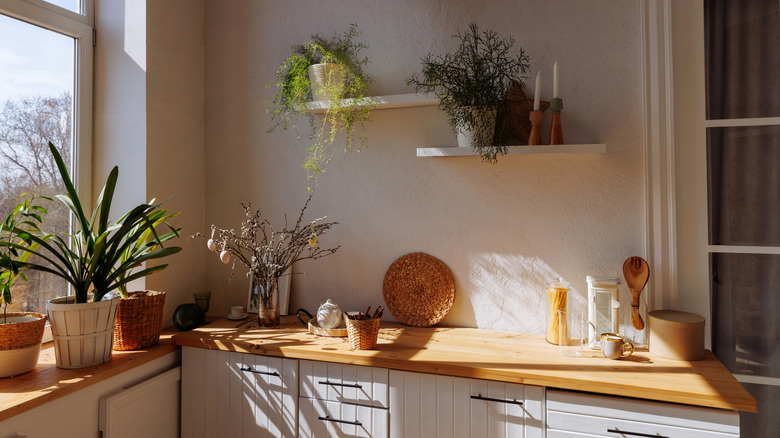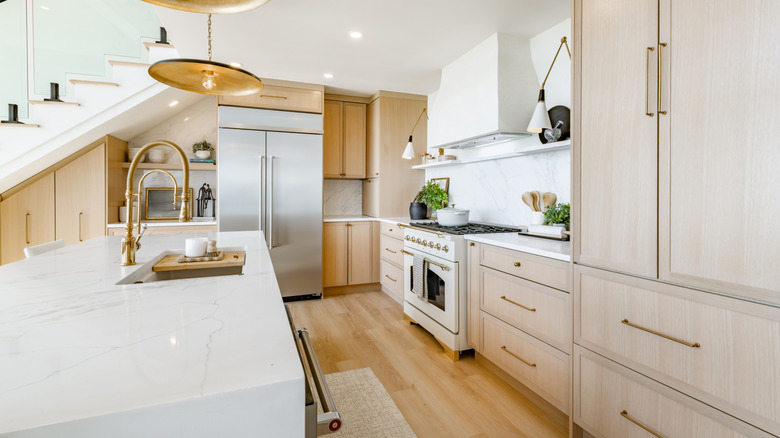The Popular Kitchen Style You'll See Everywhere In 2026
The most popular interior decorating styles for kitchens are constantly changing and evolving, but for a few years now, one aesthetic has conquered the hearts of industry professionals. According to various reports from the National Kitchen & Bath Association and design platform Houzz, transitional has been the design style of choice for kitchens since at least 2023, continuing into 2026 and beyond.
This blend between traditional and modern continues to lead over modern minimalism, organic natural, and mid-century styles. NKBA's 2026 Kitchen Trends Report found that 72% of respondents identified transitional as "a popular style in the next three years." Before that, in early 2025, Houzz's Kitchen Trends Study had found that among the 1,620 U.S. homeowners using the platform, 25% elected transitional as the preferred style for kitchen renovations, taking the top spot over traditional, modern, contemporary, and farmhouse.
It's the timeless appeal of transitional kitchens that makes them such a popular option for designers, investors, and homeowners alike. Mixing elements of old and new, this design style is compatible with a multitude of other aesthetics, making it the perfect fit for open concept homes, as well as properties for sale that wish to appeal to as many buyers as possible. It's an elegant, understated look that you're likely to never tire of.
How to achieve the transitional look in your kitchen
There's no one recipe for nailing transitional decor in the kitchen. The essence of this style is in its flexibility to move between different decades of design, retaining the charm and warmth that comes with the attention to detail and craftsmanship of traditional interiors, while promoting the functionality and fluidity that define contemporary homes. This combo can be achieved in a number of ways, but there are a few characteristics that most transitional kitchens have in common.
These spaces tend to gravitate toward neutral palettes of whites, off-whites, creams, and beiges. However, a few new neutrals are taking over transitional kitchens, providing extra room to experiment, such as olive and sage greens, or navy and baby blues. With that said, transitional kitchens usually stay away from heavy patterns or anything that can create visual clutter. Instead, this style prioritizes classic, simple materials like wood and stone, whether natural or engineered. Geometric tiles on floors and backsplashes can bring a little movement to the serene atmosphere of transitional kitchens, though sticking to soft, light colors is essential to preserve the airy, bright feel that defines interiors in this style.
When it comes to cabinetry, transitional kitchens can go one of two ways. Arguably, the most common is taking traditional style cabinets, such as Shaker or beadboard, and mixing them with the sleek modern look of stainless steel appliances and clean-lined hardware and lighting. Alternatively, you can pair contemporary slab front cabinets with rustic, vintage details in the form of pot hangers, antique tables, or vintage-style ranges.

